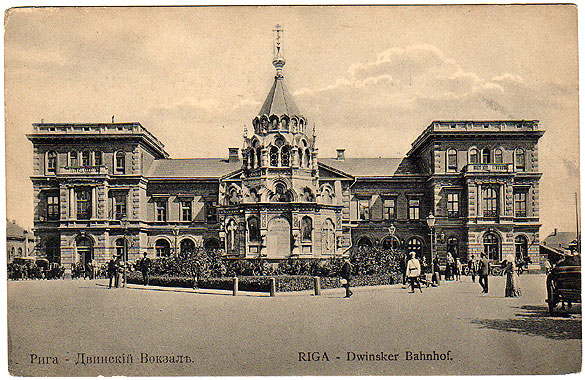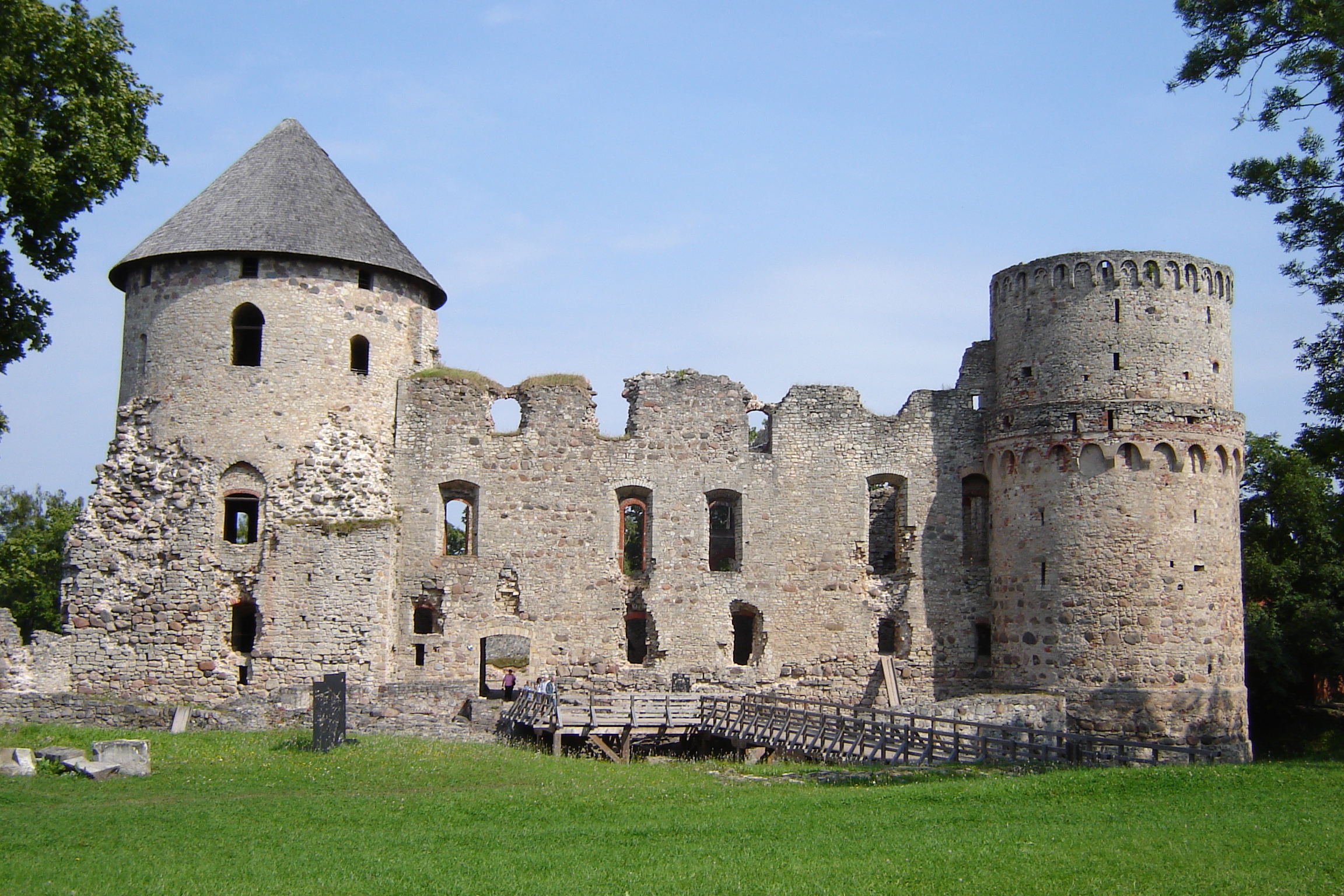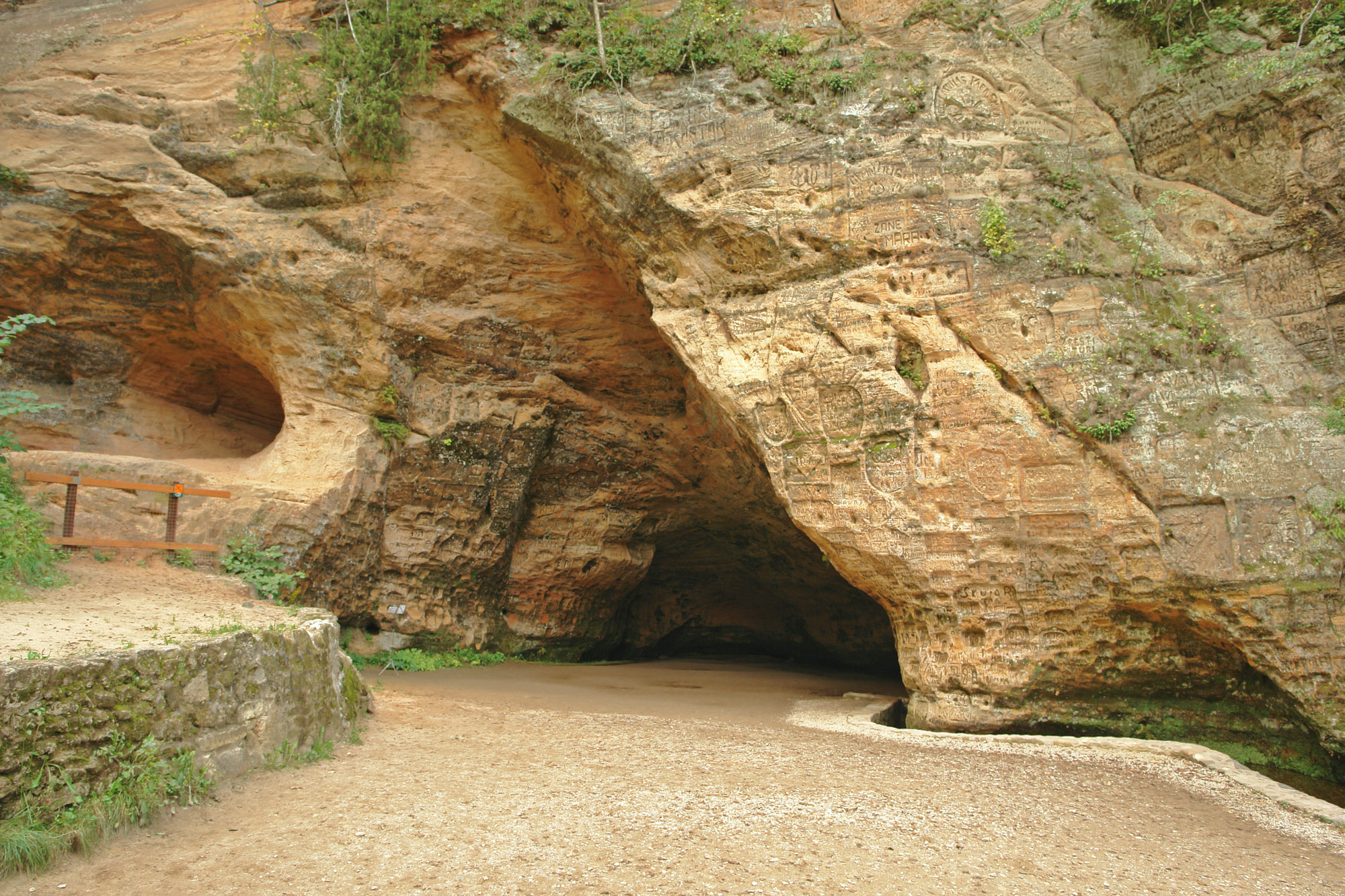|
Riga–Lugaži Railway
The Riga–Lugaži Railway is a long, gauge railway in Latvia. It was built in the late 19th century (commencing in 1886) to connect the cities of Riga and Saint Petersburg via Valga and Pskov. The railway was opened in 1889. The final station in Latvia is Lugaži (near Valka). The railway was last used for the Riga–Saint Petersburg service in 1998, after which St Petersburg trains operated via Rēzekne. For several years there were no cross-border services, and trains terminated at Lugaži, but since 2008 a regular passenger service again operates from Riga to Valga in Estonia twice a day, with an onward connection to Tallinn via a train in Estonia. During the COVID-19 pandemic The COVID-19 pandemic, also known as the coronavirus pandemic, is an ongoing global pandemic of coronavirus disease 2019 (COVID-19) caused by severe acute respiratory syndrome coronavirus 2 (SARS-CoV-2). The novel virus was first identif ..., the Riga-Lugaži railway cut services to Valg ... [...More Info...] [...Related Items...] OR: [Wikipedia] [Google] [Baidu] |
Riga Central Station
__NOTOC__ Riga Central Station ( lv, Rīgas Centrālā stacijа) is the main railway station in Riga, Latvia. It is known as the main point of Riga due to its central location, and most forms of public transport stop in this area. Part of the building is a shopping centre. Three rail mainlines depart the station to the east: * Riga–Skulte * Riga–Lugaži, through to the Estonian border crossing at Valka *Riga- Krustpils, which then splits into lines to Daugavpils and Zilupe, including international routes to the Russian, Belarusian & Lithuanian borders at Zilupe, & Turmantas. Two rail mainlines depart the station to the west: * Riga–Jelgava, including lines through to Liepāja & the Lithuanian border at Meitene * Riga–Tukums, including trains through to Ventspils History The first railway station in Riga was constructed to serve as the western terminal station of the new railway line from Riga to Daugavpils which was financed by British contractors and led by ... [...More Info...] [...Related Items...] OR: [Wikipedia] [Google] [Baidu] |
Zemitāni Station
Zemitāni Station is a railway station in Riga, Latvia on the Riga–Skulte and Riga–Lugaži railway lines. History Initially the station was called ''Aleksandra Vārti'' (Alexander Gate), after adjacent Arch of Alexander I. This name is known since at least 1889. It was renamed in 1928 in honor of Colonel Jorģis Zemitāns, the commander of the Latvian Northern Brigade during the Latvian War of Independence. During the Nazi occupation of Latvia, the station carried the name ''Riga-Hohe Brücke'' (Riga-High Bridge). Following the re-occupation of Latvia by the Soviet Union in 1944, it carried the name ''Oškalni'', in memory of pro-Soviet partisan Otomārs Oškalns Otomārs Aleksandrs Oškalns (12 April 1904 — 1 September 1947) was a prominent Latvian communist and partisan fighter.Ошкалн Отомар Петрович // Большая Советская Энциклопедия. / под ред. .... In 1991, after the restoration of Latvian independence ... [...More Info...] [...Related Items...] OR: [Wikipedia] [Google] [Baidu] |
Cēsis
Cēsis (), (german: Wenden, liv, Venden, et, Võnnu, pl, Kieś) is a town in Latvia located in the northern part of the Vidzeme Upland, Central Vidzeme Upland. Cēsis is on the Gauja, Gauja River valley, and is built on a series of ridges above the river overlooking the woods below. Cēsis was one of the candidate cities for the title of European Capital of Culture, European Capital of Culture 2014 (Riga was the Latvian city that won the title). Castle The oldest settlement in Cēsis is the hillfort on List of hillforts in Latvia, Riekstu hill, a fortified wooden castle built by a tribe known as the Vends. The mound with its partly preserved fortification system can still be seen in the Castle Park. This settlement was located near major trade routes from west to east and dominated the regional countryside. German crusaders known as the Livonian Brothers of the Sword began construction of a castle ''Wenden'' near the hill fort in 1209. When the castle was enlarged and f ... [...More Info...] [...Related Items...] OR: [Wikipedia] [Google] [Baidu] |
Līgatne Municipality
Līgatne Municipality ( lv, Līgatnes novads) is a former municipality in Vidzeme, Latvia. The municipality was formed in 2009 by Merger (politics), merging Līgatne parish and Līgatne, Līgatne town, with the administrative centre being Līgatne. It has an area of . On 1 July 2021, Līgatne Municipality ceased to exist and its territory was merged into Cēsis Municipality. Law on Administrative Territories and Populated Areas See also * Administrative divisions of LatviaReferences Līgatne Municipality, Former municipalities of Latvia {{vidzeme-geo-stub ...[...More Info...] [...Related Items...] OR: [Wikipedia] [Google] [Baidu] |
Līgatne
Līgatne (; german: Ligat) is a town in Līgatne Parish, Cēsis Municipality in the Vidzeme region of Latvia. It is situated on the Gauja River. The village of Līgatne was built around the paper mill, still extant, on the River Līgatne in the 19th century. Later it grew into a town and was then awarded city status in 1993. Līgatne Nature Trails The reserve known as the Līgatne Nature Trails is also located here, in the Gauja National Park, in the forest on the left bank of the Gauja River downstream from the paper mill. There are extensive paths through the nature reserve both for walking and for cycling, and there is a separate route for cars. There are also facilities for horse-riding and camping. The reserve was set up in 1975 for the protection and display of the diversity of species, both plant and animal, which are characteristic of Latvia. The animals here have been rescued from all over Latvia, either because they were injured, or because they had been tamed a ... [...More Info...] [...Related Items...] OR: [Wikipedia] [Google] [Baidu] |
Sigulda
Sigulda (; german: Segewold, pl, Zygwold, russian: Сигулда) is a town in the Vidzeme region of Latvia, from the capital city Riga. Overview Sigulda is on a picturesque stretch of the primeval Gauja river valley. Because of the reddish Devonian sandstone which forms steep rocks and caves on both banks of the river, Sigulda has been called the "Switzerland of Vidzeme". After the restoration of Latvian independence in 1991, an emphasis was placed on conserving Sigulda's public monuments and parks as well as improving the town's tourist sector. Supported by the town council, a traditional Opera Festival takes place in an open-air music hall in the castle ruins each summer. A Town Festival is celebrated in May when cherry trees blossom, while Sigulda is known for the colors of its trees in autumn. Sports such as skiing, bobsledding, and the luge are popular in wintertime and bungee jumping is practiced during the rest of the year. The Gutmanis Cave lies halfway between Siguld ... [...More Info...] [...Related Items...] OR: [Wikipedia] [Google] [Baidu] |
Sigulda Municipality
Sigulda Municipality ( lv, Siguldas novads) is a municipality in Vidzeme, Latvia. The municipality was formed in 2003 by merging Sigulda town, Sigulda Parish and More Parish. In 2009 it absorbed Allaži parish, too; the administrative centre being Sigulda. The population in 2020 was 17,992. On 1 July 2021, Sigulda Municipality was enlarged when Krimulda Municipality, Mālpils Municipality and Inčukalns Parish were merged into it. Twin towns — sister cities Sigulda is a member of the Douzelage, a town twinning association of towns across the European Union. This active town twinning began in 1991 and there are regular events, such as a produce market from each of the other countries and festivals. As of 2019, its members are: * Agros, Cyprus * Altea, Spain * Asikkala, Finland * Bad Kötzting, Germany * Bellagio, Italy * Bundoran, Ireland * Chojna, Poland * Granville, France * Holstebro, Denmark * Houffalize, Belgium * Judenburg, Austria * Kőszeg, Hungary * Marsaskala, M ... [...More Info...] [...Related Items...] OR: [Wikipedia] [Google] [Baidu] |
Inčukalns
Inčukalns is a village in Sigulda Municipality, Latvia Latvia ( or ; lv, Latvija ; ltg, Latveja; liv, Leţmō), officially the Republic of Latvia ( lv, Latvijas Republika, links=no, ltg, Latvejas Republika, links=no, liv, Leţmō Vabāmō, links=no), is a country in the Baltic region of .... Inčukalns had 2,028 residents in 2006 . Towns and villages in Latvia Sigulda Municipality Vidzeme {{Vidzeme-geo-stub ... [...More Info...] [...Related Items...] OR: [Wikipedia] [Google] [Baidu] |
Inčukalns Municipality
Inčukalns Municipality ( lv, Inčukalna novads) is a municipality in Vidzeme, Latvia. The municipality was formed in 2006 by merging Inčukalns Parish and Vangaži town, the administrative centre being Inčukalns. The population in 2020 was 7,640. On 1 July 2021, Inčukalns Municipality ceased to exist. Inčukalns Parish was merged into Sigulda Municipality and Vangaži town was merged into Ropaži Municipality. Inčukalns underground gas storage Inčukalns underground gas storage facility, which helps to serve the Baltic States, is located in the municipality. The facility has a storage capacity of 4.47 bcm. The gas is stored approximately 800 meters underground. The facility is linked to the Balticconnector. See also * Administrative divisions of Latvia (2009) The current administrative division of Latvia came into force on 1 July 2021. On 10 June 2020, the Saeima approved a municipal reform that would reduce the 110 municipalities and nine republic cities to 43 local ... [...More Info...] [...Related Items...] OR: [Wikipedia] [Google] [Baidu] |
Vangaži
Vangaži () is a town in Ropaži Municipality in the Vidzeme region of Latvia. History The name Vangaži (german: Wangasch) was first mentioned in the 17th century as the name of a local manor. The name itself is a combination of two words in the Livonian language - ''vang'' (field) and ''aži'' (place). Since the 17th century there was also a Lutheran church in Vangaži. Close to the modern town of Vangaži there were several manufactures which produced paper, glass and copper products. The modern town started in the 1950s when the concrete factory was founded. In 1957 the village Oktobra ciemats was founded which in 1961 was renamed to Vangaži. In 1992 Vangaži was granted the status of a town. Sports From 1968 to 1991 Vangaži had a relatively strong football club - known at first as Celtnieks Vangaži, then renamed to Betons Vangaži. From 1989 to 1991 the club coached by Vladimirs Serbins played in the top Latvian football league. With the bankruptcy of the concr ... [...More Info...] [...Related Items...] OR: [Wikipedia] [Google] [Baidu] |



